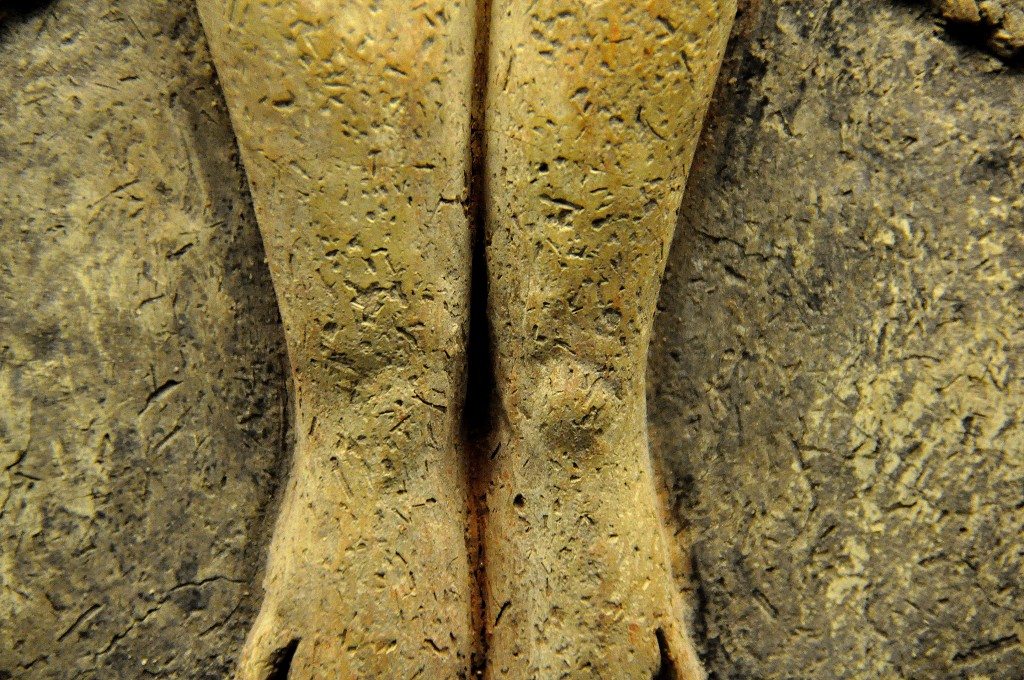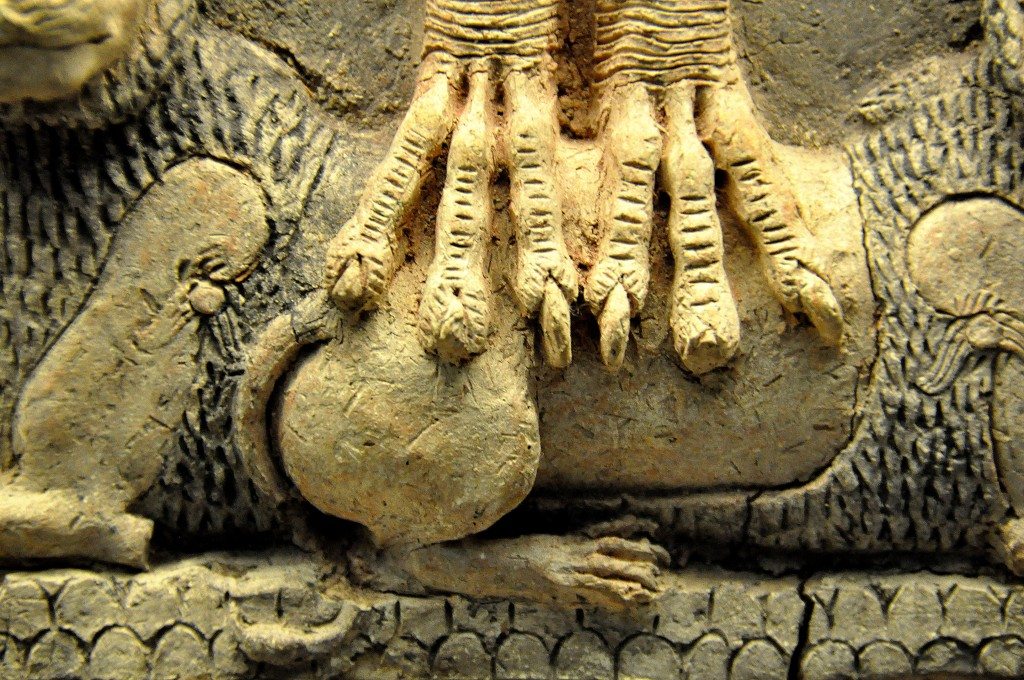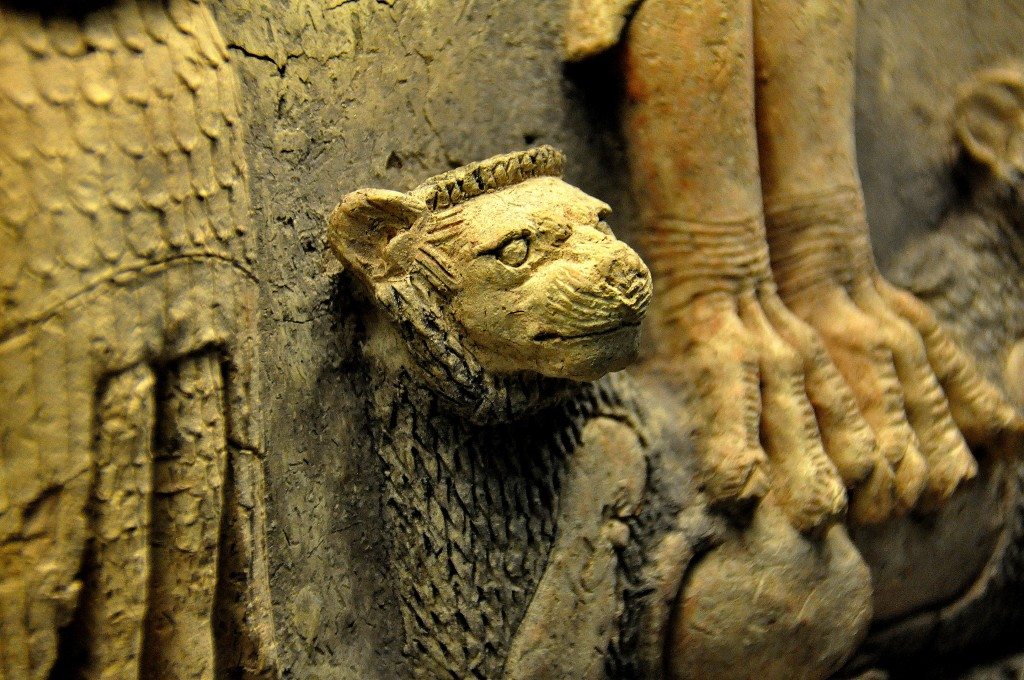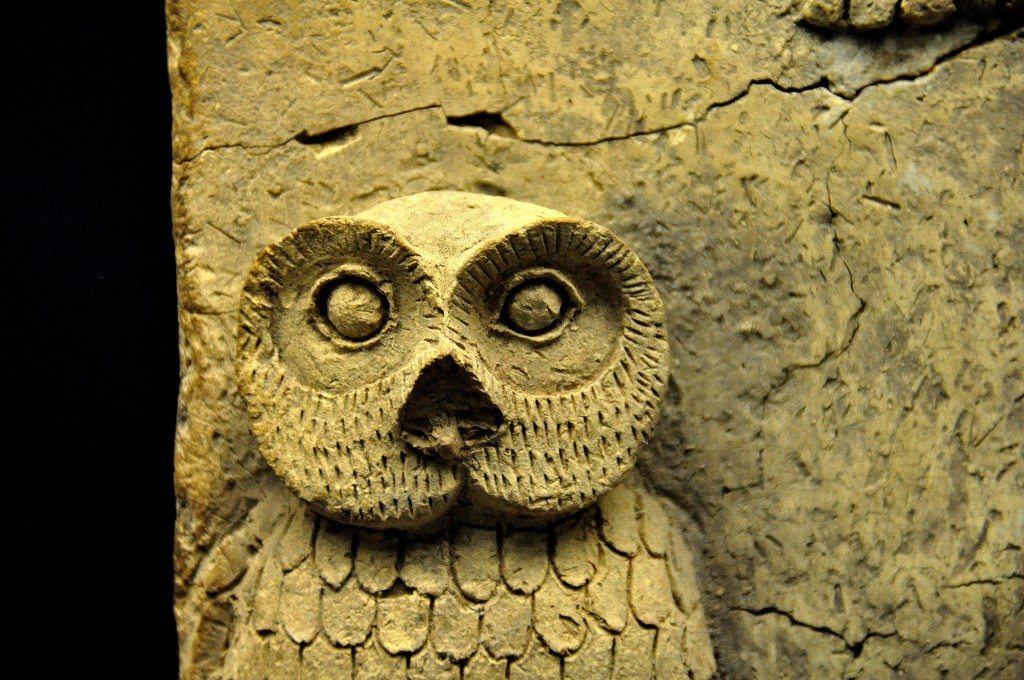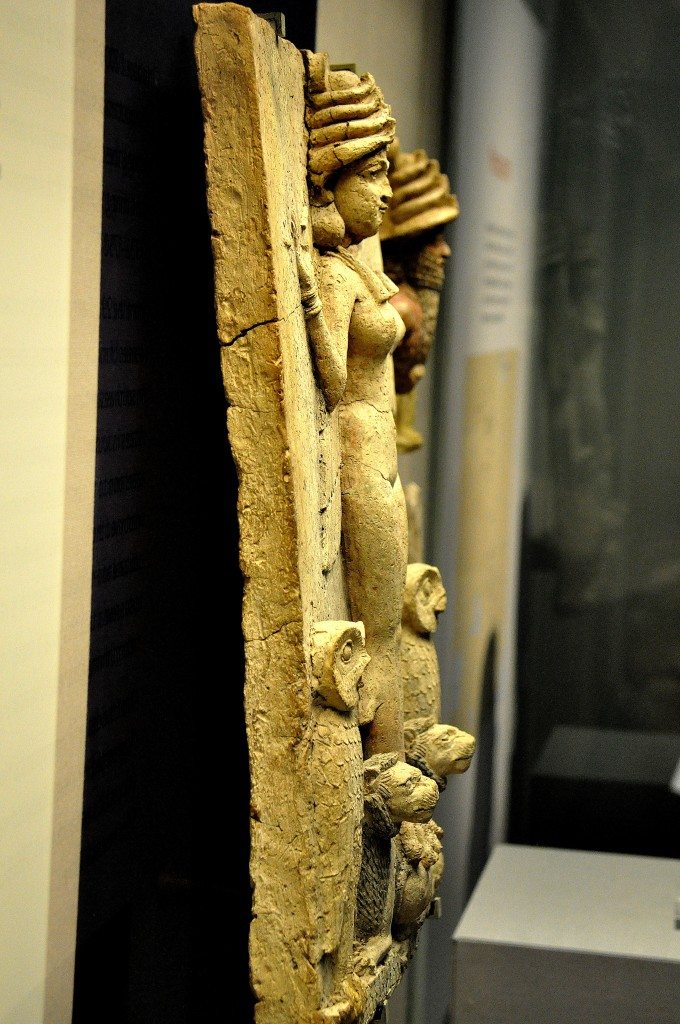Room 56 of the British Museum; Mesopotamia: A large display case houses the “Queen of the Night Relief.” It is one of the masterpieces of the British Museum, also known as the “Burney Relief”. This terracotta plaque came from my land, Mesopotamia (mostly modern-day Iraq) and dates back to the Old Babylonian period, 1800-1750 BCE. My friend Joshua J. Mark published a very nice article about the Queen of the Night relief here on the Ancient History Encyclopedia site; therefore, I will not discuss the archaeology or history of the relief and will focus only on the experience of viewing the piece.
I stood a meter away from the case and watched the British Museum’s visitors; what will they do when they meet this “Queen?” Generally, they took some pictures of her and some selfies. A minute, more or less, they spent. It was my turn now. I approached the case; the glass was very clean and transparent.

A close-up image of the relief. showing the upper part of the nude female deity. Photo © Osama S. M. Amin.
I will express my thoughts as a physician who examined the anatomical details of an approximately 4000 year-old woman. I’m a consultant neurologist, not an anatomist, but I studied anatomy in medical school!
Upper Body
I scrutinized each and every centimeter of the Queen’s Relief and shot quite a few pictures. The female figure is portrayed as if she is alive; a very attractive and naked woman. The orbits (eye sockets) are hollow (might well have been inlaid with another material). The eyebrows are relatively thick and join each other at the mid-line; a style that is still used by many Iraqi women. The cheeks are full and her lips are thin and their corners are turned up (with a shy smile). The tips of her nose and chin are broken. The right external ear (or auricle) has survived, and its length spans the distance from the outer eye canthus (the outer angle where both eyelids meet each other) down to the corner of the mouth (perfect human anatomy!).
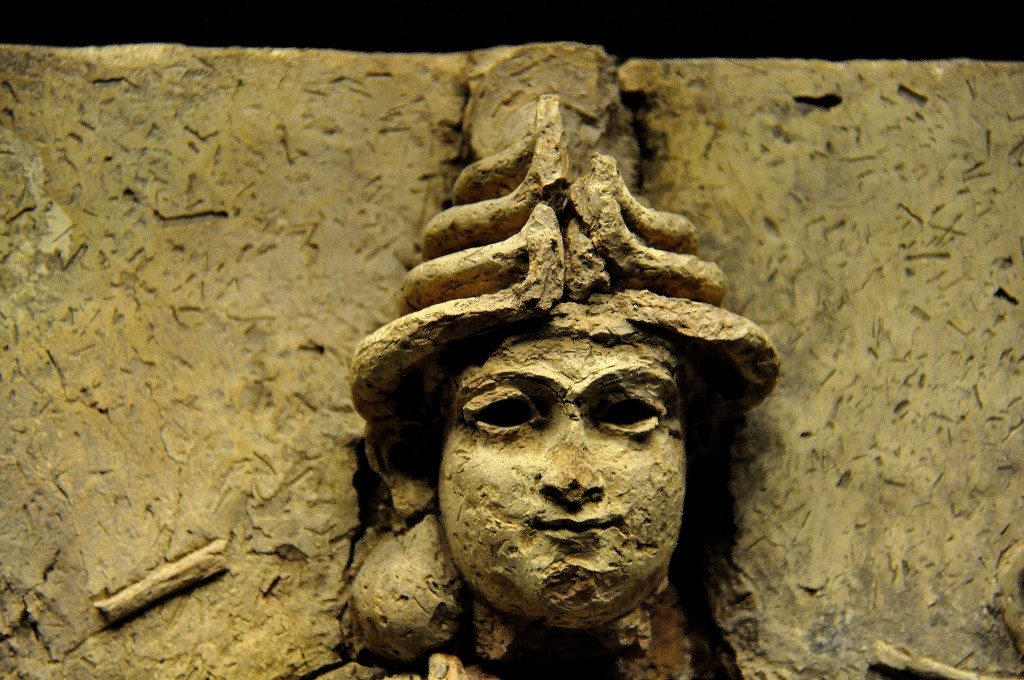
A close-up image of the face of the female deity. Note the hollow eyes, full cheeks, and joined eyebrows. The upper left horn of her headdress and the left hair bun are lost. Photo © Osama S. M. Amin.
Part of her forehead is visible because she wears a four-tiered headdress of horns (symbol of divinity). The headdress is topped by a disc. The left upper horn is lost. The hair of the scalp is underneath the headdress. However, the bulk of her “long” hair is divided into two buns, on either side (the left one is lost). The rest of the hair is joined into two braids which extend down on either side of the upper chest wall and on a single broad necklace. What a versatile hairstyle she has! Part of the right half of the necklace is lost.
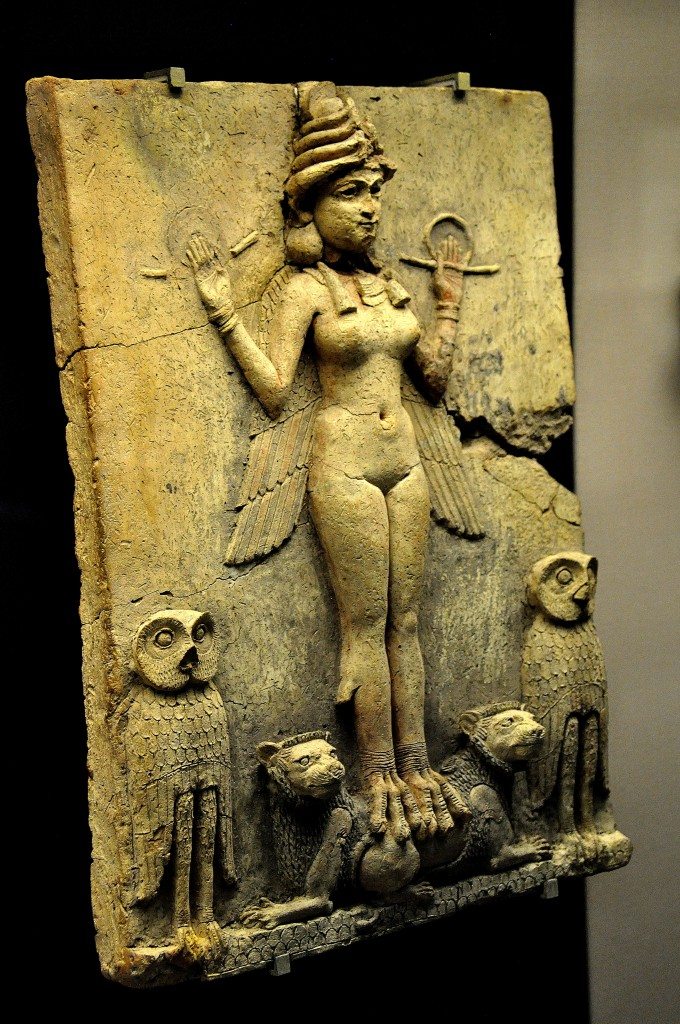
Terracotta plaque of the Queen of the Night Relief or Burney Relief at the British Museum. The display case lies in room 56, Mesopotamia. Photo © Osama S. M. Amin.
The neck is relatively narrow and not that short. The shoulders are narrow and relatively down-sloping. The breasts are full and elevated and their outer margins extend beyond the outer (lateral) chest wall. There is no cleavage. Although there are no nipples, both areolae (the small pigmented circle around the nipple) were highlighted by a dark pigment.
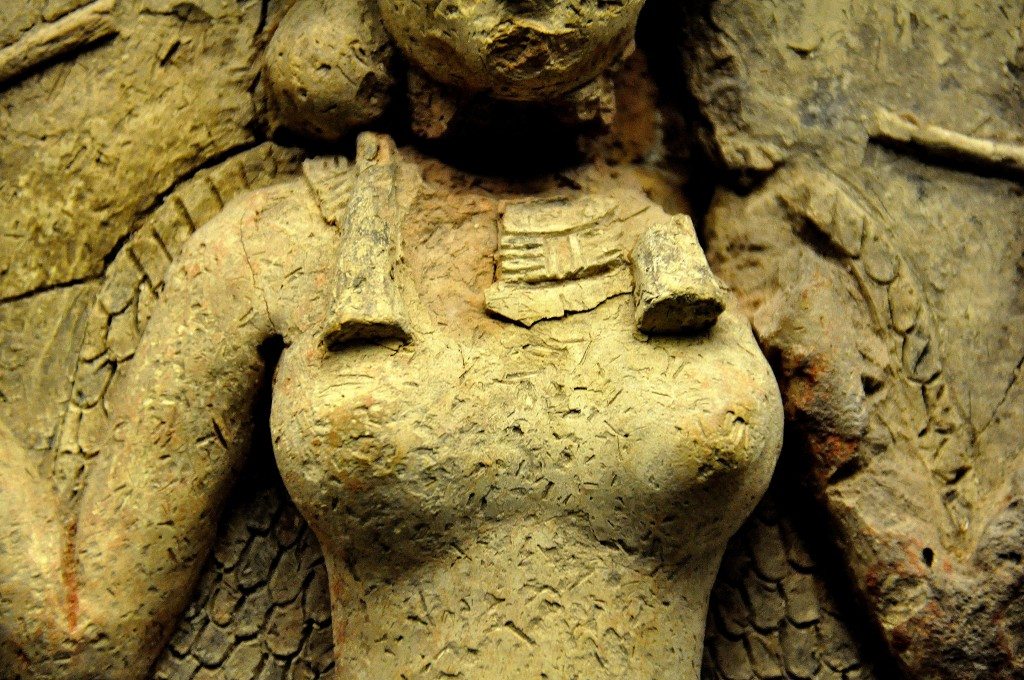
Note the curvy shoulders, necklace, hair braids, the breasts. There are no nipples but both areolae were highlighted in a dark pigment. Photo © Osama S. M. Amin.
Both armpits are depicted clearly. The arms are symmetrically lifted up and the inner aspect of both hands face the viewer; the palm creases are very clearly demarcated. The thumbs are in an adducted position (adduct: to draw inward toward the median axis of the body or toward an adjacent part or limb) and hold a rod-and-ring symbol (the right one is lost), which is also a symbol of divine power. At both wrists there are bracelets of rings; traces of red color can still be seen at the base of the left thumb.
Lower Body
Below the chest, the abdomen starts and it becomes narrow and its outer margins are concave. Then the pelvis is depicted wider than the mid-abdominal area; a very feminine attitude!
The umbilicus (navel; belly button) is in its perfect anatomical position; it lies at the mid-point of an imaginary horizontal line, which joins the upper surface of both iliac crests (the upper outer margin of the boney pelvis). These boney crests are shown as convex curves on the outer margin of the upper pelvis.
The pubic area is perfectly triangular in shape and curves inward. Both thighs are adducted very closely and meet at the midline. There is a small fusiform space between the inner aspects of both knee joints. We can find a patella (kneecap) at each knee joint.
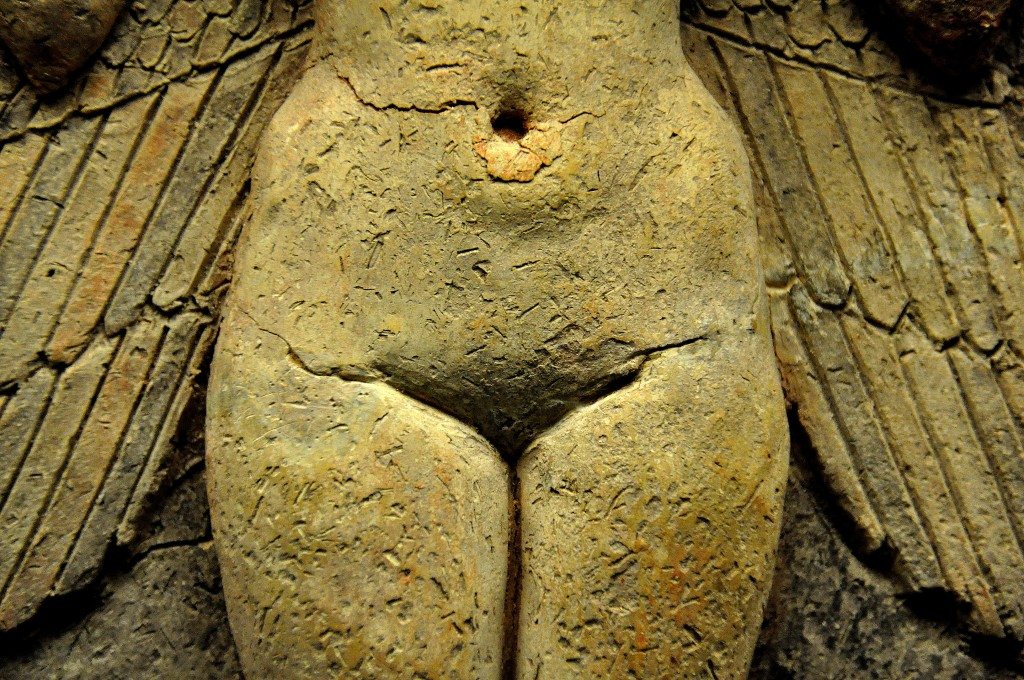
Note the perfectly depicted female-styled pelvis and the position of the navel. The pubic area curves inward and the deity’s external genitalia are hidden by the upper thighs. The long flight feathers of the wings still have their colors. Photo © Osama S. M. Amin.
Legs, Wings, and Companions
A short distance below the knee joints, small triangle protrusions stem off the lateral surface of both upper legs; they appear as dewclaws. At the ankles, the female’s feet become those of a bird. Each foot is composed of three equally long but separated toes. On the ankle and toes, we can find several scratches; these most likely represent scutes. The toes are fanned out and the feet rest on the backs of two lions that are flanked by two large owls.
The queen has two wings. The wings are partially spread in a triangular shape. The wings are shown in a very well-demarcated and stylized register of feathers. Both wings extend from just above the shoulders down to the upper part of both thighs. The wings are very similar but they are not symmetrical; they differ in the number of the feathers and their color. The upper register has covert feathers while the remaining lower registers contain long flight feathers.
Both lions are in a supine position and face the viewer with their mouths closed. The overall shape of the owls indicate that they are not from the Fertile Crescent.
All of them, the female deity and her companions, face the viewer, at the same time, in dignity. The overall scene is breath-taking, especially if you see it in profile. I spent more than an hour at this relief only! Who was the artist/sculptor who created this wonderful, charming, charismatic, and lovely woman? Did the artist make this work while a nude woman was lying in front of him or her as a model? Did the artist study anatomy? I like Kim Kardashian, but I love this Queen of the Night!
If you visit the British Museum, don’t forget to go upstairs (room 56) and meet her majesty!
The Queen’s Head

I include this close-up view of the female deity’s head just to show you the broken and lost headdress and neck. Shooting in-profile, from the left side. Photo © Osama S. M. Amin.
From Below
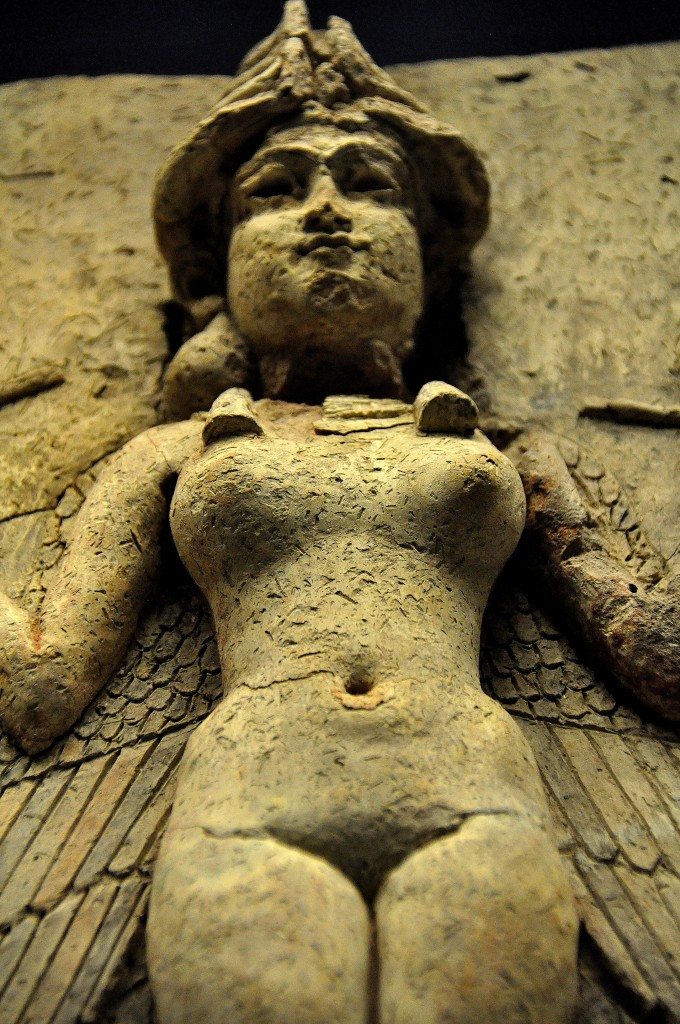
A close-up view of the female deity; shooting from below. Note the overall very attractive femininity. And she stands with power and dignity. Photo © Osama S. M. Amin.
Hand Detail
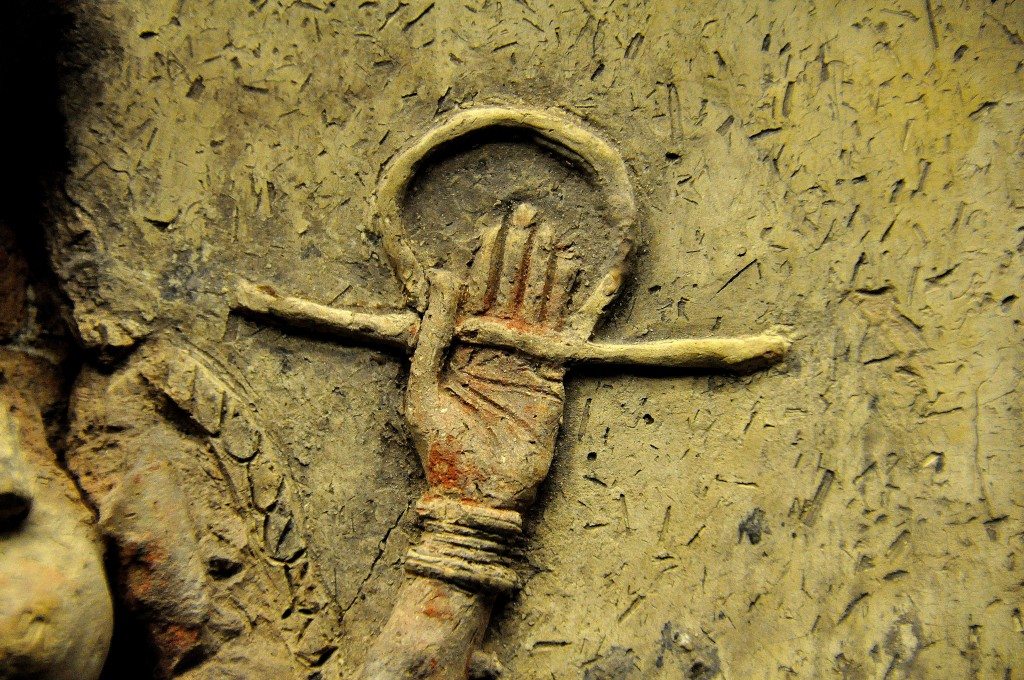
A close-up image of the left arm. The palm faces the viewer. The fingers are extended and adducted while the thumb is flexed and adducted. The hand holds the rod-and-ring symbol of divinity. Traces of red color are still seen. Note the wrist bracelet and the palm creases. Photo © Osama S. M. Amin.
Leg Detail
Feet Detail
Lion Companions
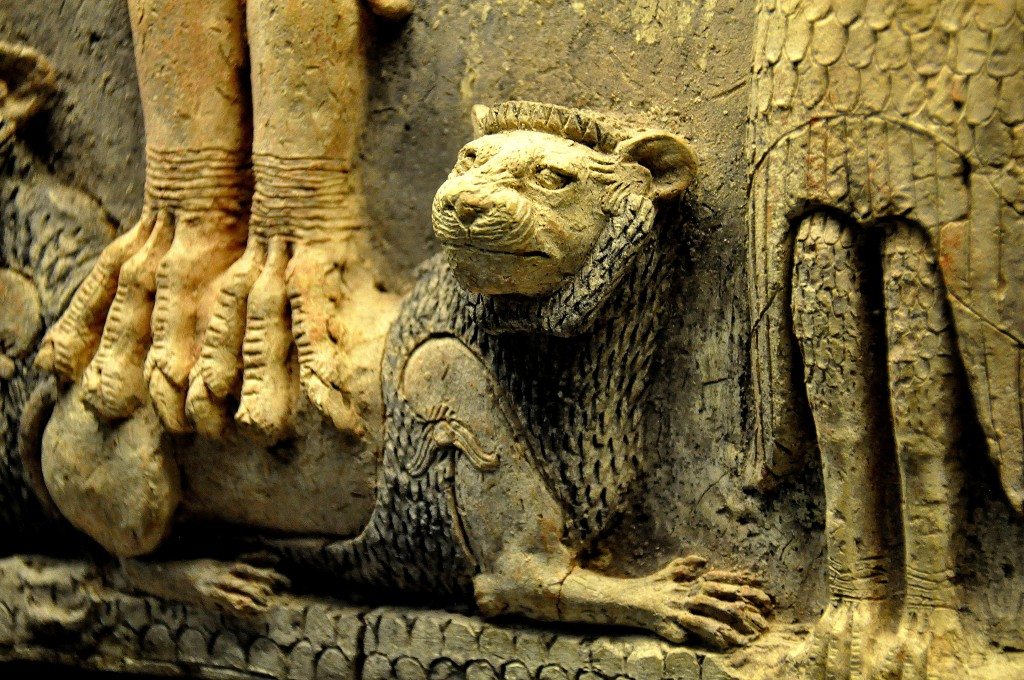
The lion on the left side; part of the body of the owl on the left side can be seen. Photo © Osama S. M. Amin.
